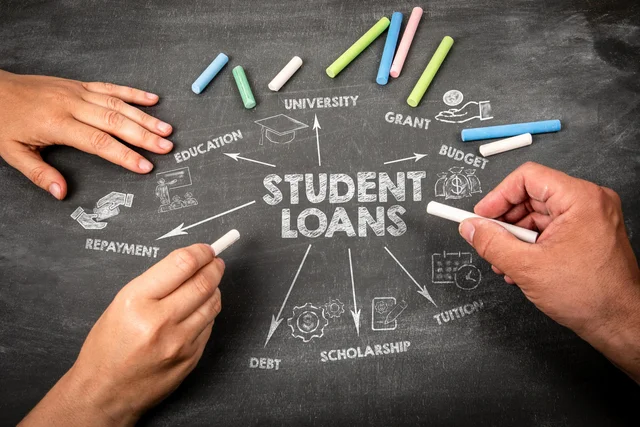Smart Strategies to Manage and Restart Payments of Student Loans Without Stress in 2025.
Many borrowers are faced with a financial shift for which they may not be quite ready when their student loan deferment expires. Although the payment suspension may offer short-term respite, repayment eventually begins, frequently with additional interest.
It’s important to have a good plan in place before your first payment is due, regardless of whether you deferred your loans because of financial difficulties, returning to school, or military service. You’ll learn useful strategies in this book to control your student loan payments once deferment expires, ease financial strain, and prevent default or delinquency.
Click to get a quote
Smart Strategies to Manage and Restart Payments of Student Loans Without Stress in 2025
If your finances are tight, deferment may provide some short-term respite while federal student loan installments resume. You can restructure your budget and lower your default risk during a deferment term, which can last up to three years. It becomes crucial to assess your remaining balance, create a budget that you can stick to, and select a repayment plan that fits your existing financial situation as this time frame comes to an end.
Comprehending Deferment of Student Loans
A deferment is a break in your loan repayment plan that causes your monthly payments to be temporarily suspended. Payments for the majority of federal student loan borrowers are automatically deferred as long as they are enrolled in classes at least half-time. Furthermore, payback usually starts after a six-month grace period following graduation, withdrawal, or falling below half-time enrollment.
Borrowers who are struggling financially might ask for a deferment to prolong this payment gap. It’s crucial to remember, though, that interest can still accrue during this time, particularly on unsubsidized loans. In certain situations, the unpaid interest might capitalization, which would mean that at the conclusion of the deferment, it would be added to the principal balance. As interest starts to be charged on the new, larger debt, this raises the total cost of the borrowing.
Getting Ready to Start Making Payments Again After Deferment
It’s critical to be proactive when your deferment draws to a close in order to prevent payment shock. Start by confirming your loan’s current status and figuring out how much your next monthly payments will be. You can accomplish this by visiting the website of your loan servicer or getting in touch with their customer service department.
After then, compare all of the repayment options to find the one that best fits your budget. Depending on your earnings and family size, an income-driven repayment (IDR) plan may lower your monthly payment to a more manageable amount if your income is restricted.
Enrolling in autopay programs, which may provide a little interest rate decrease, is another way to manage payments. In order to get better terms, including a reduced interest rate or a longer payback schedule, some borrowers might also profit from refinancing through a private lender or consolidating their federal loans.
Get in touch with your loan servicer right once if these changes still make your payments impossible to handle. Other support options might be accessible, such as other plans or, in exceptional circumstances, a negotiated settlement.
Why It’s Important to Keep Up with Payments
Maintaining current student loan payments is crucial, even if they put a strain on your finances. Missing even one payment on a private loan can have a detrimental effect on your credit score. Delinquency or default can have serious repercussions, but federal loan servicers usually wait 90 days before reporting missed payments.
Aggressive collection actions may result from letting your loan default. Regarding federal loans, the government has the authority to seize a portion of your Social Security payments, withhold tax returns, or garnish your earnings. Additionally, default can seriously harm your credit profile, making future borrowing more expensive or challenging, and it will make you ineligible for future federal student aid.
It doesn’t have to be difficult to resume student loan payments after a deferment. You may make a seamless transition back into payments by going over the specifics of your loan, making a budget, and selecting a repayment plan that works with your income. Do not hesitate to speak with your loan servicer about other possibilities if needed.
The best strategy to prevent falling behind and safeguard your financial well-being is to remain proactive and knowledgeable.
A Nugget
After a deferment period, returning to student loan payments doesn’t have to be difficult. You may stay ahead of your payments and keep control of your money by being proactive with your planning, making adjustments to your budget, and communicating clearly with your loan servicer.
Acting quickly and being informed are crucial, whether that means rearranging your monthly budget, consolidating your loans, or signing up for an income-driven repayment plan. You may transform a potentially unpleasant circumstance into a manageable financial milestone by addressing repayment with discipline and forethought.










